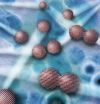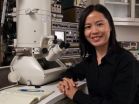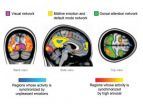(Press-News.org) Science magazine has awarded a prize for Inquiry-Based Instruction to a Case Western Reserve University class that melds biology, computer modeling, mathematical analysis and writing.
"Dynamics of Biological Systems," taught by Biology Professor Hillel Chiel and three graduate assistants, abandons traditional lectures altogether in favor of learning by doing. The teachers call the class an example of the use of the continual improvement model in education.
In it, Chiel pairs biology majors with engineering, physics or math majors, and has them concentrate on building academic and collaborative skills as they apply math to biological questions. Teachers provide guidance, not answers, often working one-on-one through class time.
Chiel, and doctoral students Jeffery P. Gill, Jeffrey M. McManus and Kendrick M. Shaw, describe "Dynamics" and the philosophy behind the course in this week's issue of Science. The story is embargoed until 2 p.m. U.S. Eastern Time Thursday, May 24.
The Science Prize for Inquiry-Based Instruction was established to encourage innovation and excellence in education by recognizing outstanding, inquiry-based science and design-based engineering education. Winners are selected by the editors of Science with the assistance of a judging panel composed of teachers and researchers in relevant science and engineering fields.
Each month, Science publishes an essay by a recipient of the award, which explains the winning project. Only 20 percent of submitted entries go on to become winners.
"The vast majority of biologists hate math and usually don't like programming," Chiel said. "Many engineers have been forced to take biology and hate it because of the memorization." The prevalence of these attitudes is reflected in questionnaires the students complete at the beginning of the semester.
This class, however, puts the two disciplines firmly in students' hands, to explore and build proficiency, and, eventually, to replicate and build on recent math models used in the biological sciences. The course is cross-listed as both a biology and biomedical engineering class.
"I've previously taken regular calculus classes with engineers and wondered what would the classes ever be useful for," said Kate Coyle, a biology major who completed the Dynamics class and graduated this semester. "Labs I've had in biology and physics show you the protocol and the expected result.
"This is not the same, at all. We were solving real problems every day."
Students work through problems using an online interactive textbook, Dynamics of Biological Systems: A Modeling Manual Chiel wrote and the computer programming language Mathematica, which scientists worldwide rely on to build mathematical models of complex systems. Chiel's book is available free to students as well as teachers who may want to use it as is or as a model for their own classes.
When teams become stuck on a problem, ,Chiel or a teaching assistant makes suggestions, gives clues and tries to coax out the answer. After success, teachers quiz individuals about how they found the solution and what they'd learned.
The class of 30 is spread out among hexagonal tables. Teams power up their laptops and go to work. Each day the teachers rotate to a different group of students, and after each class they compare notes on who has mastered the skills and who needs extra help, Gill said.
When the second half of the semester begins, teams choose a mathematical model that was recently published in a scientific journal, begin reconstructing and analyzing it and then writing in detail what they learn. The students then extend the model to answer new questions that they ask themselves, and write up results as if they were writing for a scientific journal.
Coyle and her teammates Valencia Williams and Joshua DeRivera focused on a paper that used math models to describe HIV's effects on the body, based on T-cell and free virus populations in the blood. Coyle, Williams and DeRivera found the model worked well in early stages of the disease, but was not as accurate for the late stages.
The team varied one parameter over time to simulate an exponential increase in the replication rate of the virus as it mutates from a slow-growing to a fast-growing strain, Coyle explained. This allowed them to preserve the original model's accuracy during early behavior and also reach a realistic end-stage value.
Chiel has developed the class over a decade, based on feedback from students and evidence that individuals learned and retained skills and understood concepts of biology, math and programming better under this process.
"What I find so cool is that by the last few weeks of the module, we're having really professional discussions with students," Chiel said.
By the end of the course, biology majors feel more competent in computer programming and the engineers more competent in biology and programming, according to end-of-semester questionnaires.
Since abandoning lectures for hands-on, continual development and reinforcement, overall class scores are higher on the final, conceptual exam and final grades, on average, have increased by slightly more than one letter grade.
It is much more challenging to teach the class in this way, Chiel concludes, but on the whole much more fun and effective for both students and teachers.
### END
CWRU class earns Science magazine prize for innovation
2012-05-28
ELSE PRESS RELEASES FROM THIS DATE:
First direct observation of oriented attachment in nanocrystal growth
2012-05-28
Through biomineralization, nature is able to produce such engineering marvels as mother of pearl, or nacre, the inner lining of abalone shells renowned for both its iridescent beauty and amazing toughness. Key to biomineralization is the phenomenon known as "oriented attachment," whereby adjacent nanoparticles connect with one another in a common crystallographic orientation. While the importance of oriented attachment to biomineral properties long has been recognized, the mechanism by which it occurs has remained a mystery. With a better understanding of oriented attachment ...
Nanoparticles seen as artificial atoms
2012-05-28
VIDEO:
Berkeley Lab researchers at the National Center for Electron Microscopy recorded real-time observations of nanocrystal growth that support the theory of nanoparticles acting like artificial atoms. This electron microscopy movie...
Click here for more information.
In the growth of crystals, do nanoparticles act as "artificial atoms" forming molecular-type building blocks that can assemble into complex structures? This is the contention of a major but controversial ...
Knowing genetic makeup may not significantly improve disease risk prediction
2012-05-28
Boston, MA —Harvard School of Public Health (HSPH) researchers have found that detailed knowledge about your genetic makeup—the interplay between genetic variants and other genetic variants, or between genetic variants and environmental risk factors—may only change your estimated disease prediction risk for three common diseases by a few percentage points, which is typically not enough to make a difference in prevention or treatment plans. It is the first study to revisit claims in previous research that including such information in risk models would eventually help doctors ...
Pivotal role for proteins -- from helping turn carbs into energy to causing devastating disease
2012-05-28
(SALT LAKE CITY)—Research into how carbohydrates are converted into energy has led to a surprising discovery with implications for the treatment of a perplexing and potentially fatal neuromuscular disorder and possibly even cancer and heart disease.
Until this study, the cause of this neuromuscular disorder was unknown. But after obtaining DNA from three families with members who have the disorder, a team led by University of Utah scientists Jared Rutter, Ph.D., associate professor of biochemistry and Carl Thummel, Ph.D., professor of human genetics, sequenced two genes ...
Discarded data may hold the key to a sharper view of molecules
2012-05-28
CORVALLIS, Ore. — There's nothing like a new pair of eyeglasses to bring fine details into sharp relief. For scientists who study the large molecules of life from proteins to DNA, the equivalent of new lenses have come in the form of an advanced method for analyzing data from X-ray crystallography experiments.
The findings, just published in the journal Science, could lead to new understanding of the molecules that drive processes in biology, medical diagnostics, nanotechnology and other fields.
Like dentists who use X-rays to find tooth decay, scientists use X-rays ...
No new neurons in the human olfactory bulb
2012-05-28
Research from Karolinska Institutet in Sweden shows that the human olfactory bulb – a structure in the brain that processes sensory input from the nose – differs from that of other mammals in that no new neurons are formed in this area after birth. The discovery, which is published in the scientific journal Neuron, is based on the age-determination of the cells using the carbon-14 method, and might explain why the human sense of smell is normally much worse than that of other animals.
"I've never been so astonished by a scientific discovery," says lead investigator Jonas ...
Gene discovery points towards new type of male contraceptive
2012-05-28
A new type of male contraceptive could be created thanks to the discovery of a key gene essential for sperm development.
The finding could lead to alternatives to conventional male contraceptives that rely on disrupting the production of hormones, such as testosterone and can cause side-effects such as irritability, mood swings and acne.
Research, led by the University of Edinburgh, has shown how a gene – Katnal1 – is critical to enable sperm to mature in the testes.
If scientists can regulate the Katnal1 gene in the testes, they could prevent sperm from maturing ...
Drug allergy discovery
2012-05-28
A research team led by the University of Melbourne and Monash University, Australia, has discovered why people can develop life-threatening allergies after receiving treatment for conditions such as epilepsy and AIDS.
The finding could lead to the development of a diagnostic test to determine drug hypersensitivity.
The study published today in the journal Nature, revealed how some drugs inadvertently target the immune system to alter how the body's immune system perceives it's own tissues, making them look foreign.
The immune system then attacks the foreign nature ...
Beetle-infested pine trees contribute to air pollution and haze in forests
2012-05-28
The hordes of bark beetles that have bored their way through more than six billion trees in the western United States and British Columbia since the 1990s do more than kill stately pine, spruce and other trees.
Results of a new study show that these pests can make trees release up to 20 times more of the organic substances that foster haze and air pollution in forested areas.
A paper reporting the findings appears today in the journal Environmental Science & Technology, published by the American Chemical Society.
Scientists Kara Huff Hartz of Southern Illinois University ...
Feeling strong emotions makes peoples' brains 'tick together'
2012-05-28
Experiencing strong emotions synchronises brain activity across individuals, research team at Aalto University and Turku PET Centre in Finland has revealed.
Human emotions are highly contagious. Seeing others' emotional expressions such as smiles triggers often the corresponding emotional response in the observer. Such synchronisation of emotional states across individuals may support social interaction: When all group members share a common emotional state, their brains and bodies process the environment in a similar fashion.
Researchers at Aalto University and ...



